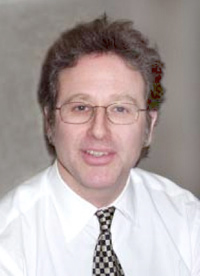Physician and professor Steven Shankman ’77 stays on cutting edge of rapidly changing radiology field
 Throughout his life leading up to medical school, Steven Shankman ’77 thought he’d be a doctor of internal medicine just like his father. Although medical school wasn’t what he expected, he quickly found his own path.
Throughout his life leading up to medical school, Steven Shankman ’77 thought he’d be a doctor of internal medicine just like his father. Although medical school wasn’t what he expected, he quickly found his own path.
“My father functioned like an old-time, Marcus Welby doctor,” says Shankman, vice chairman of radiology at Maimonides Medical Center in Brooklyn and director of its residency program. “I didn’t enjoy medical school as much as I thought I would. I was heading for something thinking I was supposed to do it rather than seeing what the world had to offer. I went into pathology, which is a fairly academic area, and it was too far removed from clinical practice. I had a very good friend who was a radiology resident and he loved it, and a lot of my pathology professors were always grumbling about how they should have gone into radiology. This was at the time when CT scan and ultrasound were first becoming state-of-the-art imaging. Of course, MRI was to follow that. All of these things made me like it.”
For Shankman, an assistant professor of clinical radiology at Mt. Sinai Medical School, teaching is his greatest reward. He also specializes in orthopedic and muscoskeletal imaging and performs interventional procedures like biopsies and therapeutic injections about once a week.
“During my fellowship in 1986-87, I found I had a knack for teaching and I really enjoyed it,” says Shankman, who graduated from New York Medical College in 1981. “I find that after doing the same thing for over 20 years, it becomes routine. When you’re working with people who are doing it for the first time, it keeps it exciting. I always say jokingly that the residents’ job is to keep me company, and I think there is an element of truth in that statement. I really am a residents’ advocate.”
Shankman hopes to pass along the good advice he received when he was a resident.
“I once had one of my attendings say to me, ‘Steven, why do you hesitate so much when you’re writing reports?’ I said, ‘I don’t want to be wrong.’ And he said, ‘So be wrong. You’re not helping anyone by saying it could be this or that. Make a decision.’ When people come to see us, they’re really asking a question: What do you think is wrong with my patient? It’s better to be confident in the long run,” he says.
Because of rapidly changing technology, diagnostic radiology is one of the most competitive fields in medicine. Through the use of highly specialized software in teleradiology, radiologists can view images from anywhere in the world.
“Many diagnoses are made in the radiology department,” says Shankman. “If you’re a radiologist, you’re going to see a lot of fascinating cases during the day. If you’re interested in the diagnostic, problem-solving aspect, radiology is very attractive.”
At its best, radiology is a vital part of providing quality health care.
“My hope is that the radiologist can be a bit of a gatekeeper by correctly doing the right imaging and doing the right interpretation and guiding patient treatment in a more efficient way and preventing unnecessary treatment,” Shankman says. “A large part of healthcare is in the imaging; whether the imaging is preventing unnecessary surgeries and improving patient care is really the debate.”
As an undergraduate, he found the opportunity to do honors thesis and independent study research invaluable in his later understanding of medicine. The English graduate also was a member of Lafayette’s intellectual community at McKelvy House.
“McKelvy House was a very eclectic group,” says Shankman. “It gave me a comfort to perform at my best level and allowed me to thrive because I found a place I could feel at home.
“My honors thesis was about the portrayal of sickness in Charles Dickens’ novels and the degree to which the lay observer was able to make accurate descriptions of illness. I had total independence to work on my project. I was really learning about the human condition in a way that I never had before. I see medicine as a big part of that. And I find that good writers really get human behavior. I think Shakespeare knew more about human behavior than any psychologist.”
 Throughout his life leading up to medical school, Steven Shankman ’77 thought he’d be a doctor of internal medicine just like his father. Although medical school wasn’t what he expected, he quickly found his own path.
Throughout his life leading up to medical school, Steven Shankman ’77 thought he’d be a doctor of internal medicine just like his father. Although medical school wasn’t what he expected, he quickly found his own path.